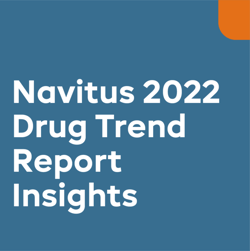Did you know that by shifting coverage of certain specialty drugs from the medical benefit to the pharmacy benefit, you can save 20-25%? Today, we’re going to learn how you can gain control over more of your specialty spend.
Today’s article is the third in our specialty pharmacy series. If you missed our first two installments on specialty pharmacy, be sure to check them out:
MEDICAL BENEFIT VS. PHARMACY BENEFIT
Specialty medications can be covered under either the medical or pharmacy benefit, depending on benefit design and method of administration. Medications that require a clinician to administer them, such as injectable or infusion medications, are typically covered under the medical benefit.1
Generally speaking, the same medication will cost more when covered under the medical benefit vs. the pharmacy benefit. This occurs for two reasons:
- Claims processed under the pharmacy benefit provide standardized information with clinical and cost details.1
- Claims processed under the medical benefit contain additional administration fees and lack standardization, providing little visibility into clinical and cost information. Unfortunately, this creates an opportunity for overbilling, allowing costs to spiral out of control.1
Approximately 55% of specialty medications are processed under the pharmacy benefit, while another 45% fall under the medical benefit.2 By shifting coverage of certain drugs from the medical benefit to the pharmacy benefit, you can gain control of more of your specialty spend and save an additional 20-25% or more on certain traditional medical benefit drugs.3

MEDICAL PHARMACY SOLUTIONS
Your specialty pharmacy and pharmacy benefit manager (PBM) can work together to help you manage more of your spend so you can realize additional savings. Here are four options to choose from:
Channel Management
Coverage of certain drugs can be shifted from the medical benefit to the pharmacy benefit by blocking payments for certain specialty medications that fall under medical and covering them under pharmacy instead. The medications are then shipped to the physician’s chosen site of care.
Site-of-Care
Costs can vary between physician offices, hospitals and the home. Using your PBM’s prior authorization program, patients can be directed to the most cost-effective and clinically-appropriate site of care for each specialty medication.
Medical Prior Authorization
Prior authorization is typically used for the pharmacy benefit, but it can also be applied to the medical benefit. This helps ensure appropriate use, directs members to cost-effective options and limits excess quantities. To ensure optimal care, the PBM’s medically-administered product committee should evaluate each medication according to evidence-based guidelines for efficacy and safety.
Medical Benefit Rebates
Switching to the pharmacy side allows you to benefit from rebates that weren’t previously available for drugs processed under the medical benefit. Your PBM can also use a preferred drug list to direct members to clinically effective medications that are more cost-effective and have rebates.
Curious how much these solutions can save your organization? Discover this and more in our e-book on specialty drugs.

- Lindsay Conway. Specialty pharmacy, explained. Advisory Board. https://www.advisory.com/research/care-transformation-center/care-transformation-center-blog/2018/03/specialty-pharmacy. Published February 22, 2018. Accessed September 4, 2019.
- Medicine Use and Spending in the US: A Review of 2018 and Outlook to 2023. IQVIA Institute for Human Data Science. https://www.iqvia.com/institute/reports/medicine-use-and-spending-in-the-us-a-review-of-2018-and-outlook-to-2023. Published May 9, 2019. Accessed August 27,2019.
- Aitken M, Kleinrock M, Pennente K, Lyle J, Nass D, Caskey L. Medicines Use and Spending in the U.S. IMS Institute for Healthcare Informatics. Published April 2016. Accessed July 23, 2019.





